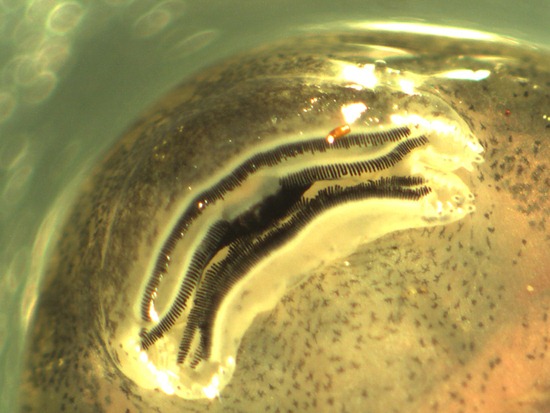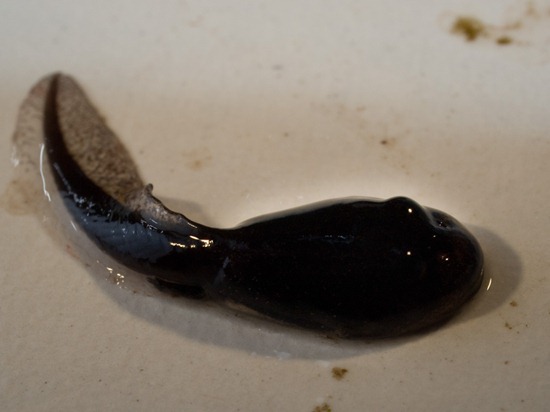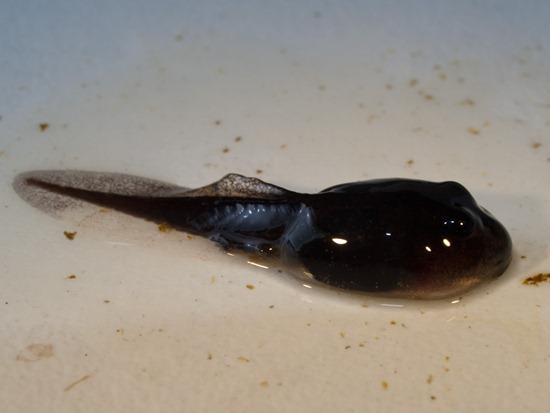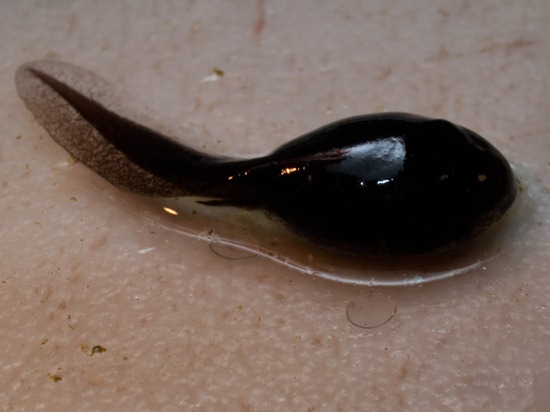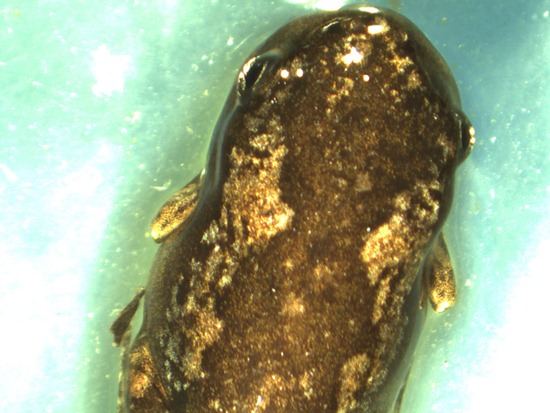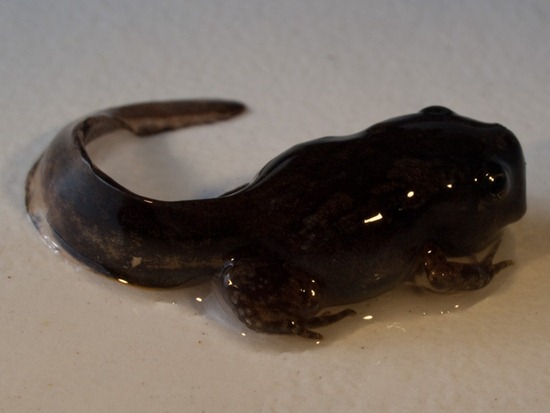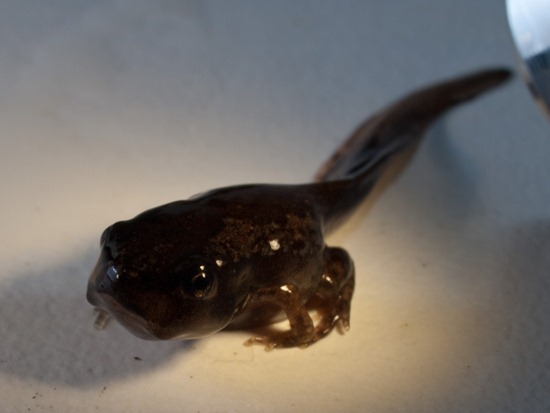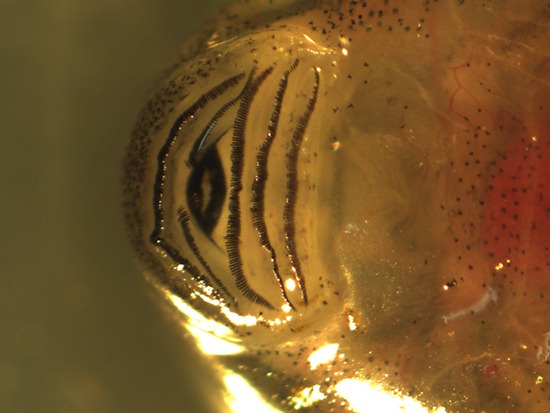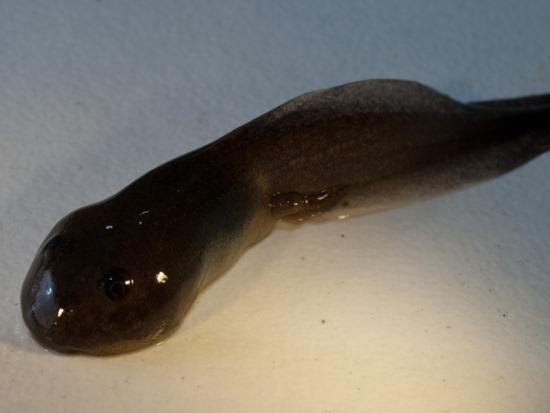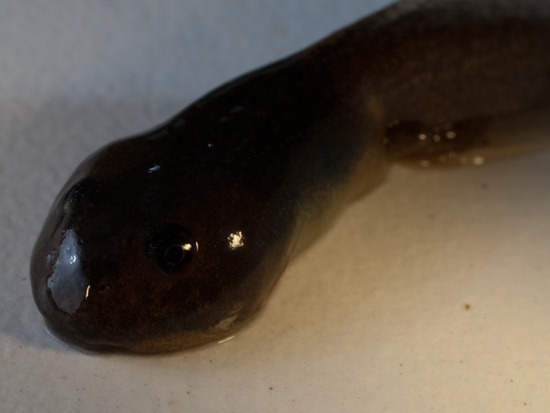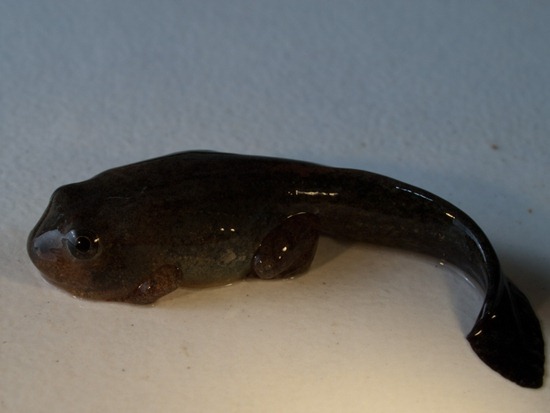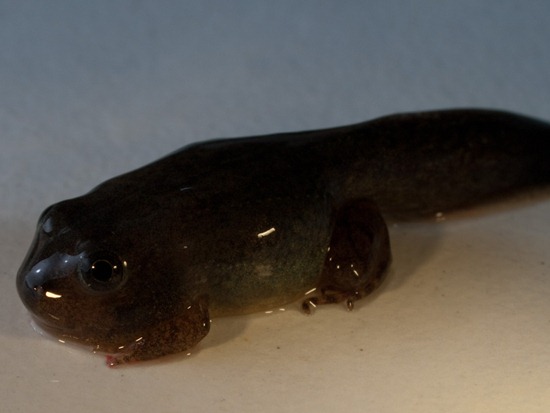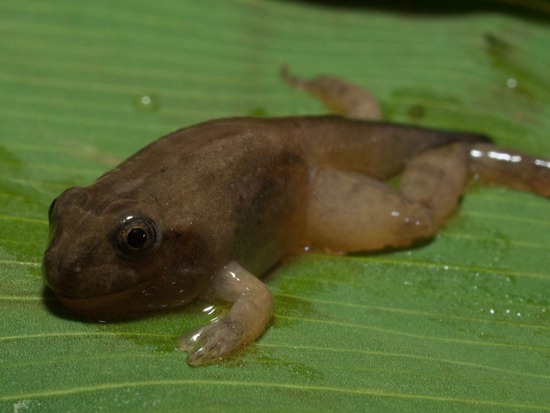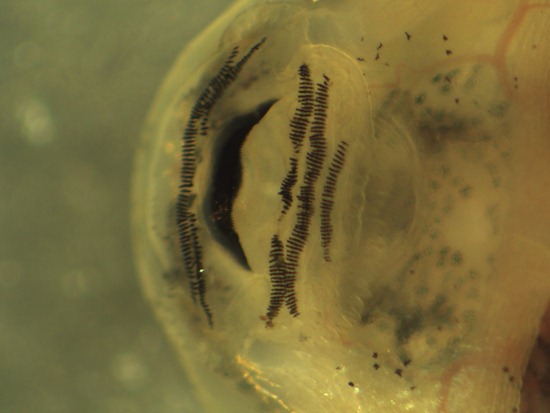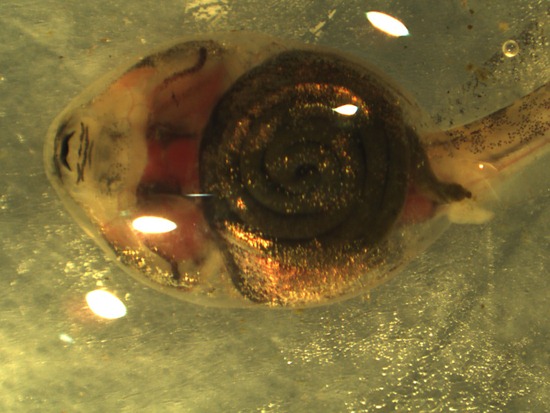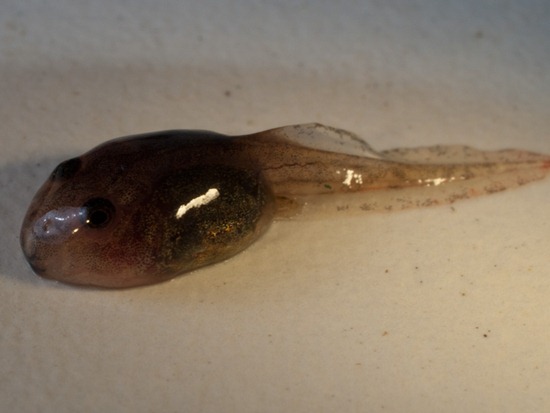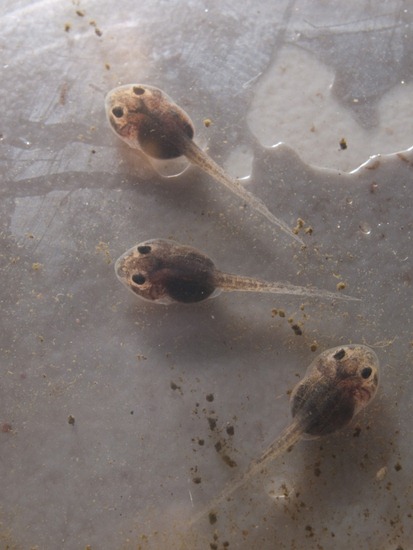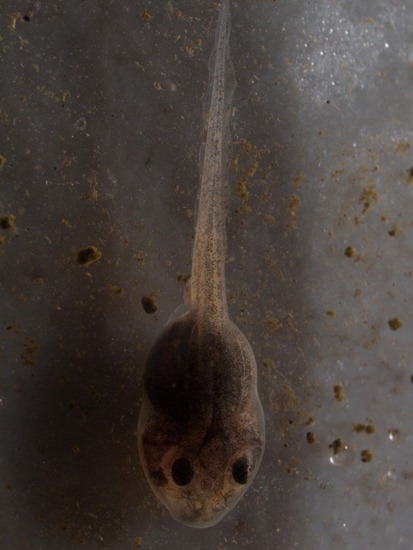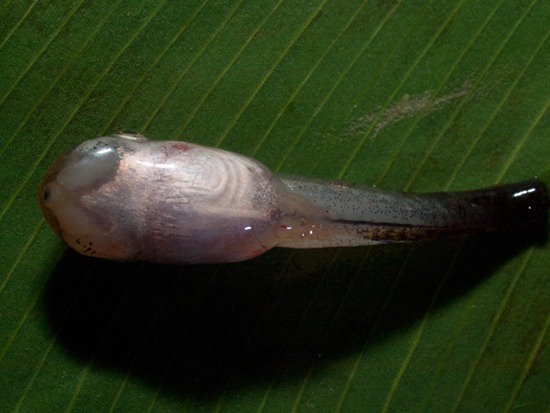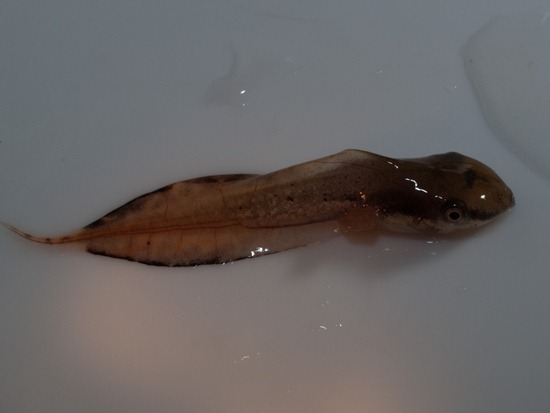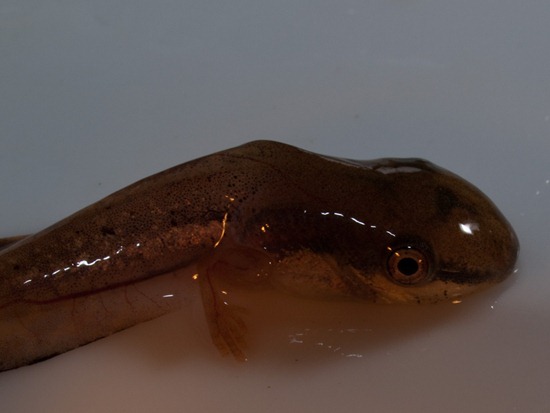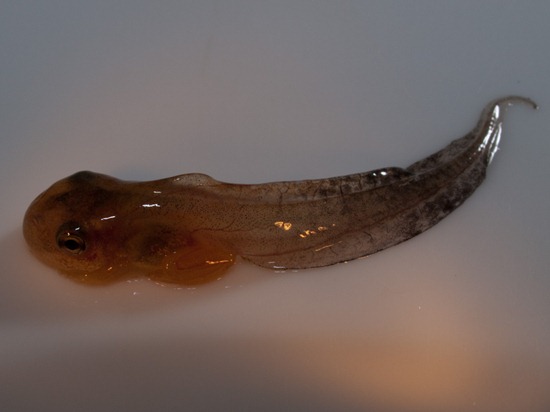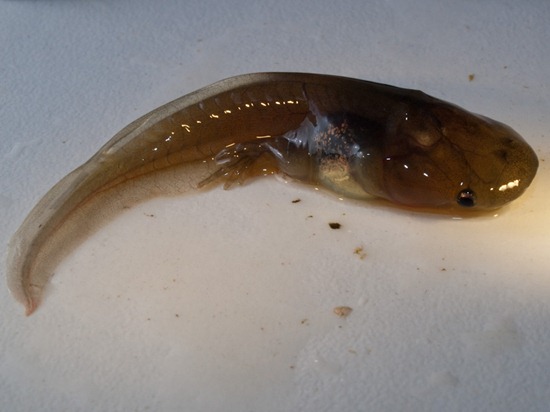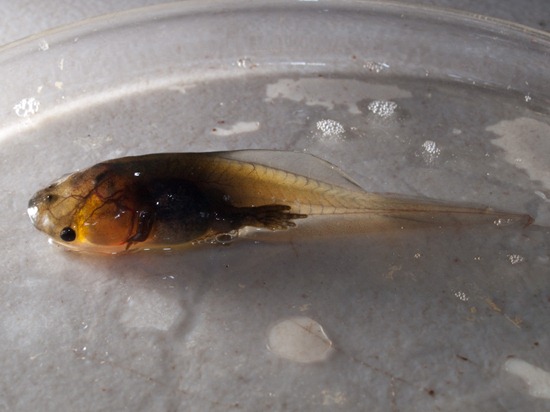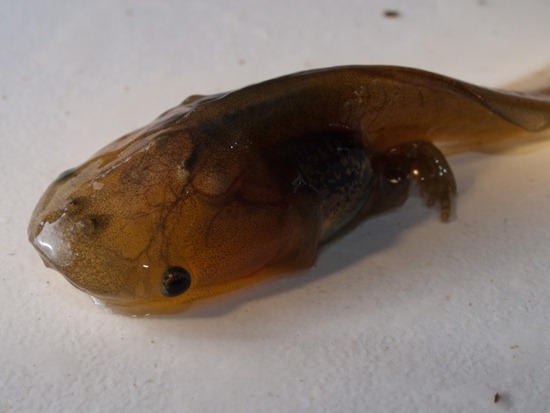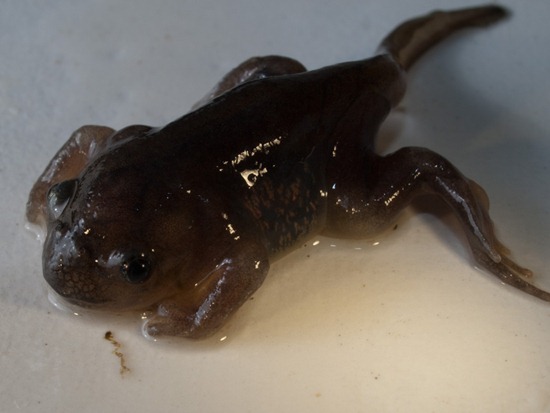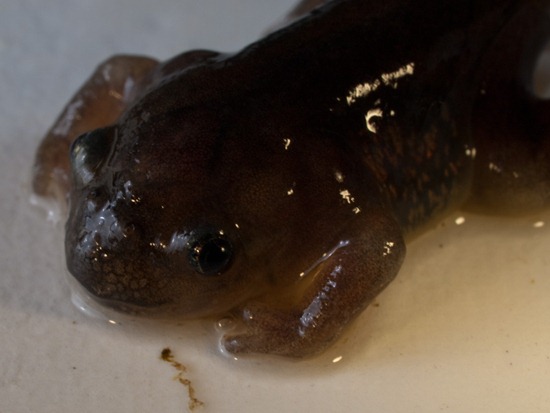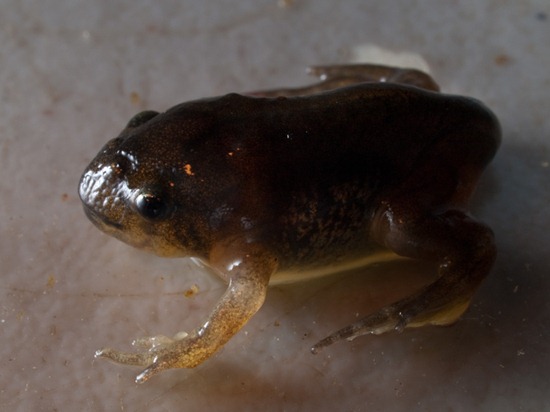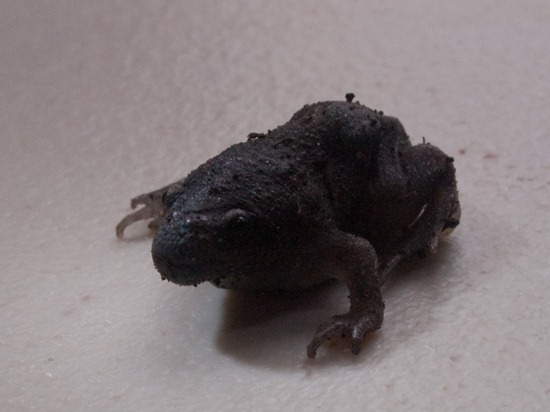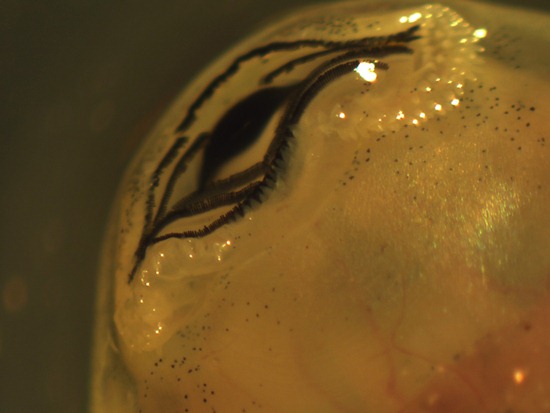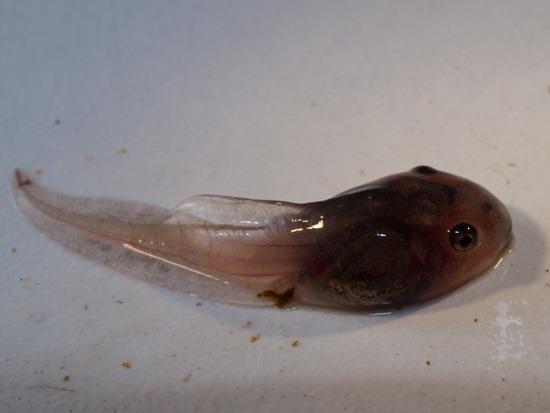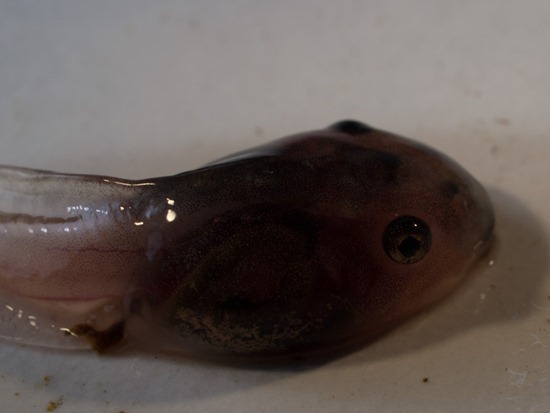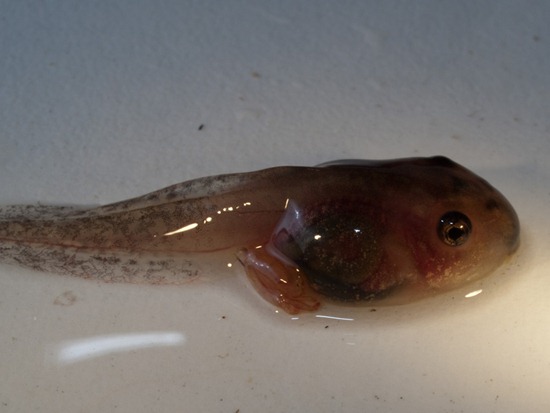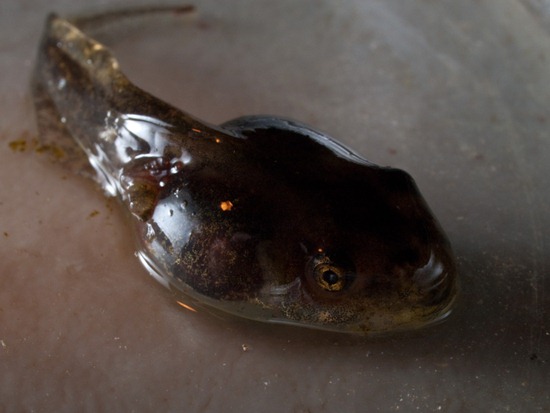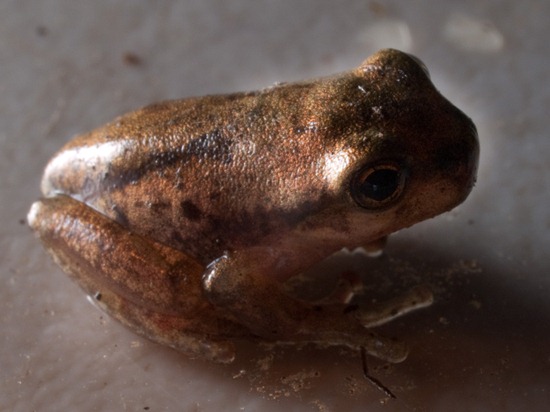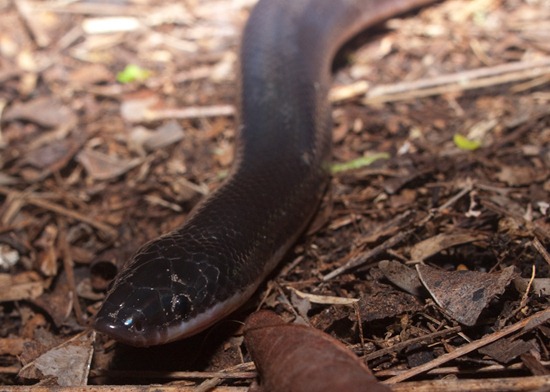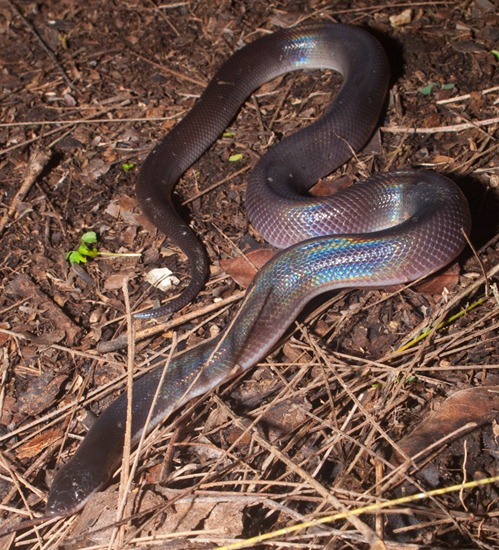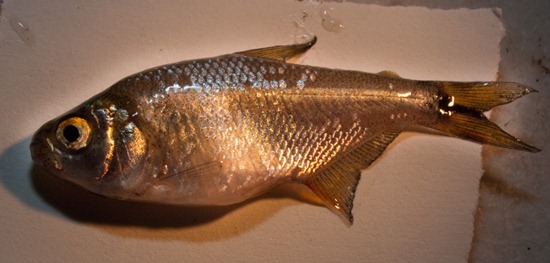I made it up to take another timelapse of the sunrise from the Guayacan overlook (sunset , both, and first try) . This time, I knew where the sun would be rising from, and it’s in the frame; however, it was a cloudy morning, and the sun isn’t acutally visible until the last couple of seconds!
Monthly Archives: July 2010
Tadpoles of Parque Nacional Palo Verde
Mahmood Sasa-Marin, the station director at OET Palo Verde, requested that I photograph tadpoles and metamorphs of the anurans of Palo Verde that he has collected. He has been attempting to rear most of the species here with the intention of learning rearing techniques for experimental purposes. The posts included here are a series of photographs I’ve taken of these tadpoles and metamorphs. In most cases, I’ve photographed the mouth of each species as they are important in identification.
The links below provide access to pages for each species presented. This is not a comprehensive list – it’s a work in progress. The included species are those that have been more or less separated and are being reared. Other anuran species present and breeding in Palo Verde are Leptodactylus poecilochilus, Leptodactylus fragilis (formerly labialis), Hypopachus variolosus, Incilius coccifer, Chaunus marinus and Lithobates forreri.
The post for each included tadpole are below, and this post is available in the above link as a more permanently visible page.
Tadpole posts:
Rhinophrynus dorsalis
Engystomops pustulosus
Incilius luetkenii
Smilisca baudinii
Hyla microcephala
Leptodactylus melanonotus
Incilius (Bufo) luetkenii tadpoles
Identification of Incilius luetkenii (a yellow toad; deformed here) tadpoles has been difficult; the species has only been recently defined, and no description of the tadpole was available before Savage’s key was constructed, so there I. luetkenii is no in the key. The tadpole keys to Chaunus marinus (the marine or cane toad) , but given the reduced number of C. marinus here compared to I. luetkenii, we think the tadpoles below are the latter. This is, of course, one of the reasons Mahmood is rearing the tadpoles. It seems to be going well though as evidenced by the metamorph photographs below!
The tadpole is medium sized to small, and appears dark, making it difficult to photograph. The oral disk is emarginate, and the mouth has 2/3 denticles, with the second anterior denticle having a medial gap.
Other tadpole posts:
Rhinophrynus dorsalis
Engystomops pustulosus
Incilius luetkenii
Smilisca baudinii
Hyla microcephala
Leptodactylus melanonotus
Leptodactylus melanonotus tadpoles
Leptodactylus menanonotus tadpoles are large, fast, benthic generalists with a streamlined body. Their body is somewhat greenish and generally dark. The oral disk is complete, and the mouth is beaked with 2/3 denticles. The second denticle is sometimes broken according to Savage, but has always appeared a below in the specimen I observed.
I’m unsure how to tell the other common Leptodactylus tadpoles from this species (L. fragilis [formerly labialis] and mislabeled as L. poecilochilus here and here).
Other tadpole posts:
Rhinophrynus dorsalis
Engystomops pustulosus
Incilius luetkenii
Smilisca baudinii
Hyla microcephala
Leptodactylus melanonotus
Engystomops (Physalaemus) pustulosus tadpoles
Engystomops pusulosus, like many anurans, was recently changed from Physalaemus. The tapoles are very small, benthic, generalists with an emarginate oral disk, beak and 2/3 complete dentricles. The dentricles are the little black stripes around the mouth below, and the beak is the larger, solid black mouth part. Compared to other tadpoles of similar size (i.e., Incilius), Engystomops has reduced pigmentation and is lighter in color.
Other tadpole posts:
Rhinophrynus dorsalis
Engystomops pustulosus
Incilius luetkenii
Smilisca baudinii
Hyla microcephala
Leptodactylus melanonotus
Hyla microcephala tadpoles
Identification of Hyla microcephala tadpoles is relatively simple here in Palo Verde. They are the only species with a long, filamentous tip to their tails. They also have a dark, lateral line, lack denticles, but have a beak. The other Hylidae species here (i.e. Smilisca) are larger, have denticles, and lack a filamentous tail.
Other tadpole posts:
Rhinophrynus dorsalis
Engystomops pustulosus
Incilius luetkenii
Smilisca baudinii
Hyla microcephala
Leptodactylus melanonotus
Rhinophrynus dorsalis tadpoles
This post shows tadpoles and metamorphs of the infamous Sapo Borracho or Mexican Burrowing Toad. Keys to the tadpoles of this species generally refer to barbals (catfish like whiskers), but they didn’t seem to be present in the specimen I used. Perhaps it’s a plastic phenotype – would turbidity influence barbal presence or absence? The tadpole is relatively large, fast swimming, and with a broad tail. The mouth is terminal and without a beak or denticles.
Other tadpole posts:
Rhinophrynus dorsalis
Engystomops pustulosus
Incilius luetkenii
Smilisca baudinii
Hyla microcephala
Leptodactylus melanonotus
Smilisca baudinii tadpoles
Smilisca baudinii (eaten here and a froglet here) is one of two hylid tadpoles that are being reared (Hyla microcephala is the other). The tadpoles are medium-sized, with a broad tail and they are somewhat light in color, especially compared to the bufonids. The mouth is similar to that of the other tadpole species here in that it has 2/3 denticles (with the second anterior denticle medially broken) and a prominent beak; however, the large, complete oral disk is completely surrounded by many rows of papillae; some of the other tadpoles have gaps in the papillae surrounding the oral disk. Additionally, the toe pads are visible on the budding feet of the tadpoles, which is a good indicator that this is a hylid.
Other tadpole posts:
Rhinophrynus dorsalis
Engystomops pustulosus
Incilius luetkenii
Smilisca baudinii
Hyla microcephala
Leptodactylus melanonotus
Loxocemus bicolor
I’ve posted photographs of this snake before. I’ve caught a few this year, and one of Mahmood’s assistants (Sergio) discovered this little guy. It was less than 25 cm or 1 ft, which is the smallest I’ve seen a Loxocemus, so I had to get a photograph.

